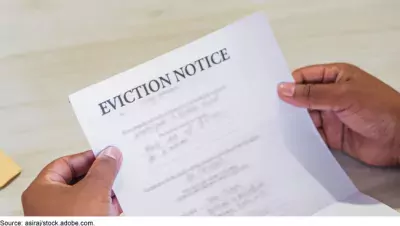A Major Eviction Moratorium Ends March 31—Then What?
COVID-19 has led to widespread unemployment and financial difficulties for millions of Americans leaving many unable to afford their rent. In an effort to prevent widespread evictions, Congress and federal agencies created and extended eviction moratoriums, prohibiting property owners from evicting tenants for not paying rent. However, the primary federal moratorium on evictions ends on March 31.
Today’s WatchBlog post looks at our new report on how well these moratoriums worked and what might happen when the primary one expires.
Image

How the moratoriums work and their impact
As part of the CARES Act, passed in March 2020, Congress prohibited evictions through the end of July 2020. One month later, the Centers for Disease Control and Prevention (CDC) created its own moratorium and later extended it through March 31. These moratoriums prohibit evictions (or removals) for nonpayment of rent. But evictions could occur for other reasons, such as failure to comply with a property’s rules. Additionally, the CDC’s moratorium requires renters to opt into the moratorium to avoid eviction. It is not automatic.
While data are not available to determine how many renters were spared eviction because of the federal moratorium, eviction filings in local courts decreased rapidly after the moratorium was approved. For example, the median rate of eviction filings from a select group of courts was as much as 94% lower in April 2020 than it was in April 2019. Eviction filings also remained lower during the CDC moratorium compared to 2019, but gradually increased through the remainder of 2020—especially in locations without separate state or local moratoriums.
What supports are available to struggling renters after March 31?
While the CDC’s eviction moratorium could help those renters who qualify, some renters may not know about it or how to use it. For example, renters must file a declaration form with their property owner and meet certain eligibility criteria, such as income level, to halt an eviction.
In our new report, we found that the CDC conducted little public outreach to promote awareness of the moratorium, and we recommended that they develop and implement a plan for doing so to ensure that eligible renters are aware of the moratorium.
When the CDC’s moratorium expires—and even though some separate state and local moratoriums will remain in place—many renters, who continue to struggle and face eviction, may need to turn to federal rental assistance.
In December, Congress approved a COVID-19 relief bill that provided $25 billion for emergency rental assistance, which state and local grantees are starting to distribute. To learn more about rental assistance programs and eligibility requirements in your area, visit the National Low Income Housing Coalition’s rental assistance database. Similarly, struggling renters may still apply for the CDC’s moratorium until it expires March 31.
- Questions on the content of this post? Contact John Pendleton at pendletonj@gao.gov.
- Comments on GAO’s WatchBlog? Contact blog@gao.gov.
GAO Contacts
Related Products

GAO's mission is to provide Congress with fact-based, nonpartisan information that can help improve federal government performance and ensure accountability for the benefit of the American people. GAO launched its WatchBlog in January, 2014, as part of its continuing effort to reach its audiences—Congress and the American people—where they are currently looking for information.
The blog format allows GAO to provide a little more context about its work than it can offer on its other social media platforms. Posts will tie GAO work to current events and the news; show how GAO’s work is affecting agencies or legislation; highlight reports, testimonies, and issue areas where GAO does work; and provide information about GAO itself, among other things.
Please send any feedback on GAO's WatchBlog to blog@gao.gov.




